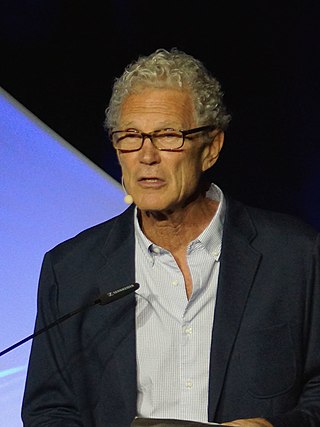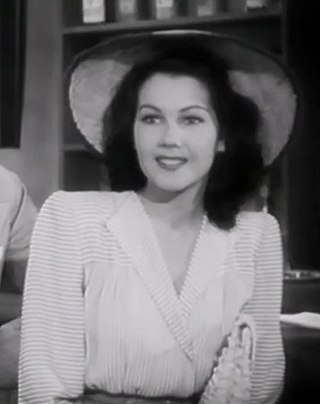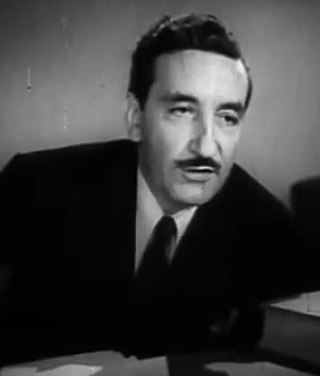
Samuel Dashiell Hammett was an American writer of hard-boiled detective novels and short stories. He was also a screenwriter and political activist. Among the characters he created are Sam Spade, Nick and Nora Charles, The Continental Op and the comic strip character Secret Agent X-9.

Guiding Light is an American radio and television soap opera. Guiding Light aired on CBS for 57 years between June 30, 1952, and September 18, 2009, overlapping a 19-year broadcast on radio between January 25, 1937, and June 29, 1956. With 72 years of radio and television runs, Guiding Light is the longest-running soap opera, ahead of General Hospital, and is the fifth-longest-running program in all of broadcast history; only the American country music radio program Grand Ole Opry, the BBC religious program The Daily Service (1928), the CBS religious program Music and the Spoken Word (1929), and the Norwegian children's radio program Lørdagsbarnetimen (1924–2010) have been on the air longer.

Lights Out is an American old-time radio program devoted mostly to horror and the supernatural.

I Love a Mystery is an American radio drama series that aired 1939–44, about three friends who ran a detective agency and traveled the world in search of adventure. Written by Carlton E. Morse, the program was the polar opposite of Morse's other success, the long-running One Man's Family.

Dean Edell is an American physician and broadcaster who hosted the Dr. Dean Edell radio program, a syndicated radio talk show which aired live from 1979 until December 10, 2010. He was also nationally syndicated in television as a medical news reporter and host of his own television shows including NBC's Dr. Dean.

William Barton Yarborough was an American actor who worked extensively in radio drama, primarily on the NBC Radio Network. He is famous for his roles in the Carlton E. Morse productions I Love a Mystery, in which he played Doc Long, and One Man's Family, spending 19 years portraying Clifford Barbour. In addition, Yarborough spent three years portraying Sgt. Ben Romero on Jack Webb's Dragnet.

One Man's Family is an American radio soap opera, heard for almost three decades, from 1932 to 1959. Created by Carlton E. Morse, it was the longest-running uninterrupted dramatic serial in the history of American radio. Television versions of the series aired in prime time from 1949 to 1952 and in daytime from 1954 to 1955.

Jeanne Bates was an American radio, film and television actress. After performing in radio serials, she signed a contract with Columbia Pictures in 1942 which began her career in films both in bit parts and larger roles in a series of horror films and noirs, including The Return of the Vampire (1943) and Shadows in the Night (1946).

James Shorttel Bannon was an American actor and radio announcer known for his work on the I Love a Mystery and Red Ryder series during the 1940s and 1950s.

American Radio Archives is located within the Thousand Oaks Library in Thousand Oaks, California and contains one of the largest collections of radio broadcasting in the United States and in the world. The archives was established in 1984 by the Thousand Oaks Library Foundation. The collections include 23,000 radio and TV scripts, 10,000 photographs, 10,000 books on radio history, and 5,000 audio recordings. The archives also house manuscripts, sound recordings, scripts, books, photographs and other materials related to the history of radio and radio broadcasting.

Roy William Winsor was an American soap opera writer, creator, producer and mystery novelist. He created three of the longest running soap operas in US television history.
Robert Achille Schiller was an American screenwriter. He worked extensively with fellow producer/screenwriter Bob Weiskopf on numerous television shows in the United States, including I Love Lucy (1955–1957) and All in the Family (1977–1979) on the CBS network. For the latter series, he received an Emmy Award in 1978 as one of the writers of the episode "Cousin Liz."

Himan Brown, also known as Hi Brown, was an American producer of radio and television programs. Over seven decades, Brown produced and directed more than 30,000 radio shows, for all of the major radio networks and syndication. He worked with such actors as Helen Hayes, Boris Karloff, Peter Lorre, Gregory Peck, Frank Sinatra and Orson Welles.

House of Myths was an early radio series which aired on NBC in 1926-29.

I Love a Mystery is a 1945 American mystery film directed by Henry Levin and starring Jim Bannon, Nina Foch, George Macready, and Barton Yarborough. Based on Carlton E. Morse's popular radio serial of the same name, I Love a Mystery was the first of three Columbia "B" pictures inspired by the radio series and the only one actually based on a script written by Morse for the radio series. The Devil's Mask and The Unknown followed in 1946.

The Wisconsin Center for Film and Theater Research (WCFTR) is a major archive of motion picture, television, radio, and theater research materials. Located in the headquarters building of the Wisconsin Historical Society in Madison, Wisconsin, the WCFTR holds over three hundred collections from motion picture, television, and theater writers, producers, actors, designers, directors, and production companies. These collections include business records, personal papers, scripts, photographs, promotional graphics, and some twenty thousand films and videotapes of motion picture and television productions.

Michael Raffetto was an American radio actor who starred as Paul Barbour (1932–1956) in the NBC Radio series One Man's Family and as Jack Packard in I Love a Mystery during the heyday of radio in the 1930s and 1940s.
Kitty Foyle is an American old-time radio and television soap opera originally aired during the 1940s and 1950s that was based on the 1940 film of the same name starring Ginger Rogers. Kitty Foyle was created by soap opera mogul Irna Phillips of Guiding Light fame and produced by daytime radio monarchs Frank and Anne Hummert of Helen Trent recognition. The program originally starred Julie Stevens in the title role of Kitty Foyle on radio. On television, the title role was portrayed by Kathleen Murray.

Family Skeleton is an American old-time radio serial drama, "the story of a girl with a dark past and highly uncertain future." It was broadcast on CBS from June 8, 1953, to March 5, 1954.
Mixed Doubles is an American dramatic television series that was broadcast on NBC from August 5, 1949, until October 29, 1949.

















